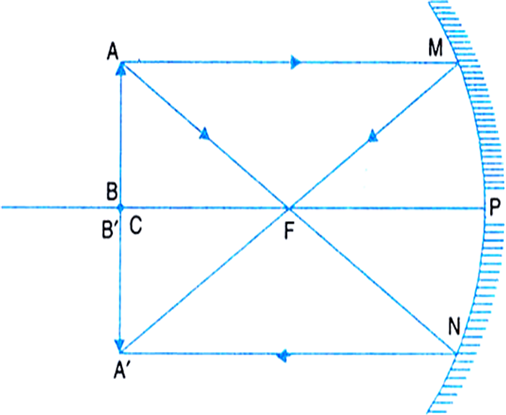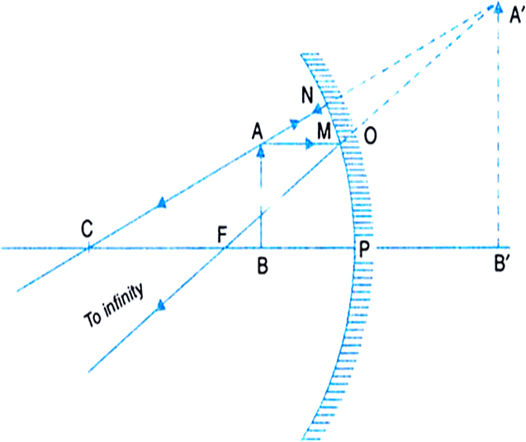By drawing ray diagrams, explain the formation of image when an object is placed on the principal axis of a concave mirror at the following positions:
(i) At infinity.
(ii) Beyond the centre of curvature.
(iii) At the centre of curvature.
(iv) Between the centre of curvature and the focus.
(v) At the principal focus.
(vi) Between the pole and the focus.






